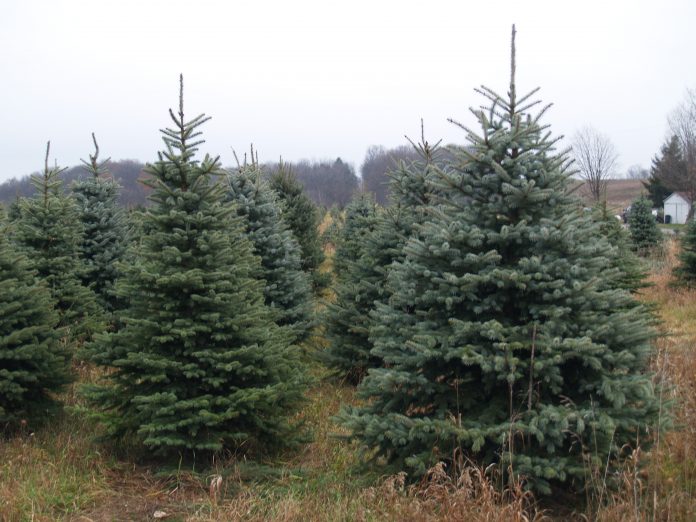SALEM, Ohio — Despite rumors, there should be plenty of Christmas trees to go around this year.
“We do have less trees in the supply chain, but we deny that it’s a shortage,” said Doug Hundley, spokesperson for the National Christmas Tree Association.
Articles about Christmas tree shortages have been going around since 2016, but Hundley said the concerns were unwarranted. In 2018, Christmas tree farmers sold 5 million more trees than in 2017, according to the NCTA’s data.
“We met that need, so we know we’re not short on trees,” Hundley said.
Recession
There are fewer trees available, and that’s partly because of the 2008 recession. Christmas trees need seven to 10 years to reach their full heights. From 2008-2010, some tree farmers went out of business and others planted less because of the economy, leaving fewer full-grown trees ready now, Hundley said.
From 2000 to 2015, however, there were too many trees and not enough demand, Hundley said. So, the lower supply just means that things have evened out, not that there is a shortage.
“No one should be worried about going away empty-handed,” Hundley said. “We have a tight supply, which means that we can meet the needs of everybody … we just don’t have an excess.”
Local farms
Joe Kozlina, of Spring Water Tree Farm, in New Galilee, Pennsylvania, said while he has heard people talk about a shortage, he hasn’t personally been affected.
“So far, it’s been kind of slow for us … you would think with a shortage, we would be busy,” he said.
It rained in the area the weekend after Thanksgiving, when many tree farms open, which may have slowed down the beginning of the season, he said.
“When it rains, everybody says ‘heck with Christmas,’” Kozlina added.
On the other hand, Richard McConnell, of McConnell’s Nursery and Christmas Tree Farm, in New Castle, Pennsylvania, said business has been good this year — almost too good.
“We don’t have as many trees as we’d like to,” he said.
McConnell didn’t slow down his planting during the recession. Some of his neighboring tree farms, however, did, and some of them are closed this year.
“Some permanently, others didn’t have enough trees and didn’t want to drain their whole supply,” McConnell explained.
This has driven more customers to his farm.
Supply and demand
The NCTA said the demand for trees is up in recent years because many millennial families prefer real Christmas trees over fake trees as an environmentally-friendly and “authentic” option. Because of the lower supply and higher demand, prices for Christmas trees have gone up.
During the recession, Hundley estimated trees were selling for about $40, and the average cost is now about $74-78. Prices increased 4% from 2017 to 2018.
“One reason we’re doing OK right now is that we don’t have an oversupply,” he said. “We don’t want to call a price hike a good thing, but it is for farmers.”
Some farms have seen customer preferences change over the years.
“There’s always a supply and demand, and it kind of goes over a six-, eight-, 10-year cycle,” McConnell said. “The trees we had available for sale in the 1980s — we wouldn’t have been able to sell them now.”
McConnell said right now, customers prefer fir trees, which have softer needles and are “cleaner.” He doesn’t have as many fir trees as he’d like to have to take advantage of the demand, but has plenty of other species that are less popular.
“We don’t have as many [trees] as we wish we had, now that the economy is booming,” Hundley said, but “we are still meeting the need.”










